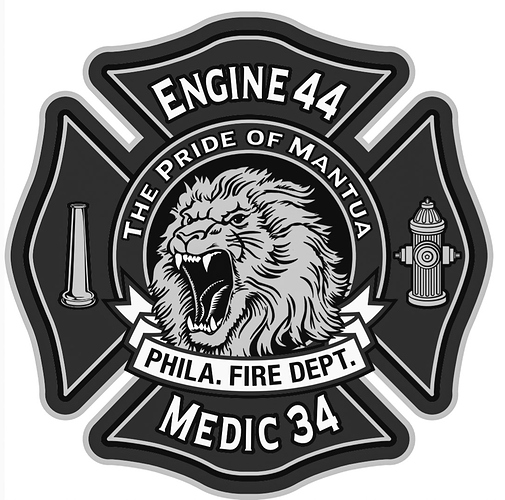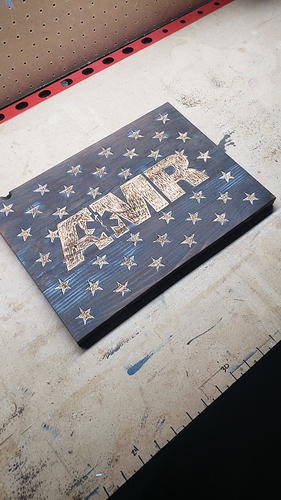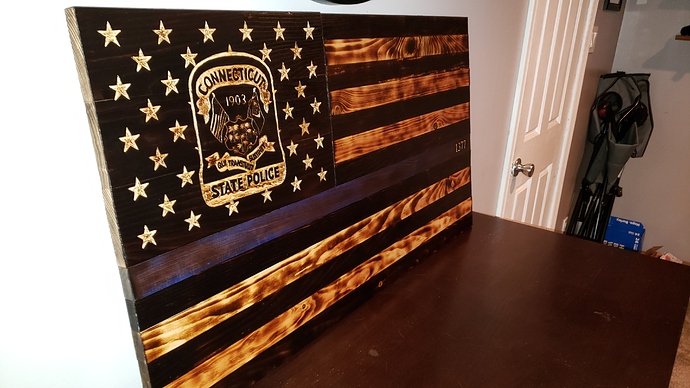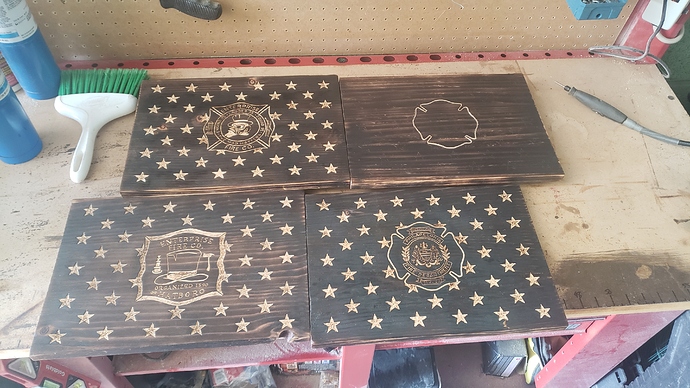Hey everyone, my name is John. For the last couple of years I’ve been making custom signs, plaques, and flags. I’ve been doing all of my carving work with a Dremel and recently made the leap to Shapeoko. I’m really excited knowing the potential this machine has. However it’s pretty intimidating being new. Some of the images I’ve carved into wood are kind of complex and I’d really love some pointers on how I can program some upcoming projects. Thanks in advance everyone! I know V-carve will come up, however some of my V-carve tests have not come out as hoped and look jagged. Attached are some photos of some unions to flags I’ve already made and an image of an engine company’s logo that I’m trying to incorporate in a union for an upcoming project. Have a great day everyone and stay safe!
Our newly anointed community manager (may he reign forever), @Julien has a e-book thing that’s worth a look: https://shapeokoenthusiasts.gitbook.io/shapeoko-cnc-a-to-z/
Winston Moy and the Carbide 3d channel (which is now run by Winston) has a lot of great videos to help you along:
https://www.youtube.com/playlist?list=PL1uBWVo4mhkBJdZwAalGIXH6hwycvmKtc This video series may be a bit basic, but still covers good stuff. Recommend checking out both youtube channels.
Also worth looking at different threads in the forums. Search bar is pretty good. Gallery is neat to look at to get inspiration.
And if you have specific questions, start a thread or have a general thread that you continue to update (like this one).
Welcome!
Please see:
Let us know if you have any questions on that or anything else.
One thing I can suggest is to get very familiar with the “trace bitmap” function in inkscape, especially the part where it can trace to different colors.
Sometimes because you only got a bitmap of a design.
BUT, and it’s almost blasphemy to admit, I’ve had some really complicated SVGs with multiple layers, and I actually ended up exporting that as a very high def PNG file, only to then trace it back to vectors afterwards… it very nicely removed all the weird/complicated geometry and it ended up with much easier to use SVG files.
With V-carve the trick is to not go too deep/too fast. Try to not go deeper than 0.1" per pass at 50ipm or so initially…
I’ve done the same…
Welcome to the community! If you run into any wood or finishing related issues, I would be happy to help you in any way I can. Don’t hesitate to reach out to me or anyone active on the board as we have a wicked awesome group of people on here that are always happy to help.
P.s. I am curious as to what you use to burn/torch wood. Please continue to share as they look great!
Edit: I just spied the blue bottles.
Hi @jchattley,
It looks like the guys have you covered, I’ll just add a few things:
- V-carve tends to give better (sharper) results in tight grain woods (or in other words, I don’t like pine very much…)
- sometimes runnin the same V-carve file a second time can help clean-up some of the remaining fuzzies
- obviously sharp cutters work best (just mentioning this because it’s not always obvious to detect when a cutter has become semi-dull)
- but at some point, even a V-carve will be limited in the level of detail you can get. There are a few tricks you could consider for small & detailed parts:
- using a diamond-drag bit to engrave the surface of a thin metal piece (say brass), that you could then inlay in your wooden piece. For policeman/fireman/medic badges I think it could work well/look cool.
- using a laser (it’s a relatively easy add-on to the Shapeoko) to engrave fine details on the surface. Check out some of @wb9tpg’s work in the Gallery, you’ll see what I mean. That lion head in your post, to me it begs to be lasered.
Enjoy the machine, learning CNC is a fun (and bumpy) ride!
This topic was automatically closed 30 days after the last reply. New replies are no longer allowed.




